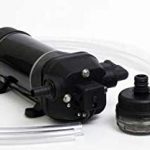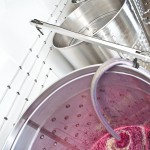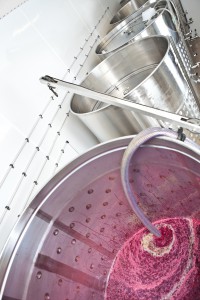Cellar Upgrades: Super Transfer Pump
A great cellar upgrade for your favorite winemaker….
The Super Transfer Pump
Super Transfer Pump
If your winemaker is looking for a cellar upgrade look no further than the Super Transfer Pump. It is self priming, and a dream to work with. Your winemaker will no longer loath racking and will get all of their work done quickly and efficiently for only $179.99.
Link to product: http://www.juicegrape.com/Pump-Super-Transfer/
For more information about racking your wine click HERE
Musto Wine Grape Company is here to help! We are New England’s largest supplier for home winemaking products and services. We can get you set up with all of your juice, grape and equipment needs and have you on track to making your own perfect pairing for next fall! Visit juicegrape.com or give us a call at (877) 812 – 1137 to learn more. We look forward to hearing from you!
The Joys of Racking Your Wine
The Joys of Racking Your Wine
Racking your wine is a necessary evil.
We know it can be tedious, but in the end it is so worth it.
Things to keep in mind when racking:
- Cleanliness: We cannot express this enough. The cleaner your cellar, the less risk you have of spoilage, the better your wine will be. Aka SANITIZE EVERYTHING!! (however if doing MLF rinse with hot water as not to agitate the ML bacteria)
- Primary Racking: Rack after your primary fermentation is complete. This protects your wine from any initial microbial fermentation issues.
- Secondary Racking: Rack after fermentation has finished. At the second racking you will want to rack your wine into an aging vessel. Whether that is a stainless steel tank or an oak barrel. Don’t forget to sulfite, unless you are doing MLF.
- Third and/or Fourth Racking: Is used more clarification purposes.
- Using a pump makes life so much easier. You can pretty much sit back and relax with a glass of wine while your juice in being transferred. If you don’t have a pump the best way to rack is by using a siphon and the gravity method. Put the primary vessel up some place high and rack into your new vessel.
The Winemaker’s Think Tank: Vol 38 – “So my wine is done fermenting, when do I rack it?”
What’s the Winemaker’s Think Tank?
Every Thursday we will post about a few frequently asked questions that our winemaker has answered. If you have a winemaking question you would like to have answered, please email us at support@juicegrape.com and we will try to get into next week’s post. Cheers! 🙂
So my wine is done fermenting, when do I rack it?
After fermentation, the next immediate step is to remove the new wine from its lees, which is the sediment left behind after fermentation. The lees contain dead yeast cells, grape particulates, and maybe even a few fruit flies that could lead to the development of some unpleasant aromas in the wine if not removed. Hydrogen sulfide can be produced from the lees if left in with the new wine. The first racking should be done within a week after fermentation is complete, the sooner the better. The wine should be racked into a sanitized container, with the wine filling the vessel completely, leaving a very little amount of headspace. In a carboy, the wine should go up to the neck of the carboy. After the first racking, the wine should be stored in a cool place. If the wine has been inoculated with Malo-lactic cultures, secondary fermentation will continue after the racking as the bacteria will travel over with the new wine into the new vessel. If the wine is going through MLF, do not add sulfites until this fermentation has been completed. If the wine is not going through MLF, then add a ¼ tsp of potassium metabisulfite per 5 gallons of wine to help preserve the wine. Rack every two months to continue clarifying and purifying the wine. Be sure to add sulfites each time that you rack.
We hope this information helps with your winemaking. If you have any follow up questions or winemaking questions in general, please email us at support@juicegrape.com.









Recent Comments